A.Chronus Exhibition
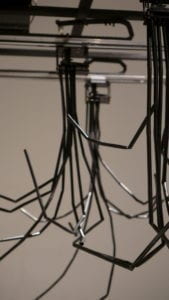
I’ve visited several art shows before. The artworks there are all silent and stationary. To most of them, they lacks the ability to provide active expression, so no matter how modern it may be, it provides me with a feeling of watching antiques or a lifeless object. That might be the difference between non-technology-based artwork and its opposite. Inanimated objects tell history and stories that do not belong to them, while the animated ones seem to express their own fluid, changeable and uncertain thought, which make themselves a part of their story. To some extent, it owns the free will and when we see the artworks in the Chronus exhibition we see more of the humanity, the ability to think and move, than the mechanism from them. Moreover, the participation of technology components also expanded the means of expression by simple movement to a programmed and far more complicated set of variation, as is depicted in the photos that the mechanical parts work together to create a output. I must admit that the field trip is an unforgettable and horizon-expanding experience. I saw many delicately functioning machines and a brand new perspective to understand the meaning of interactive.
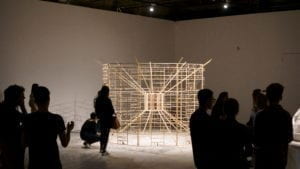
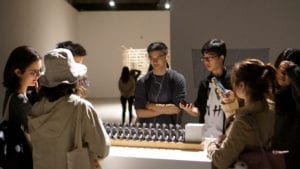
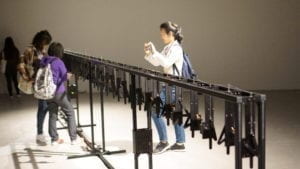
B.Inspiration
1.Mechanical Mirror
Going back to the first interactive art project i’ve seen, the mechanical mirror, created by Daniel Rozin, it is still the project which leaves me with the deepest impression. The most interesting part is that it uses a technological way to represent a non-technological process: the reflection. And the creator mentioned its characteristic as the simplicity that every person may know the meaning of the output and the relationship between input and output immediately. The simplicity of communcation between the artwork and the audience leads to the efficiency of interaction and affects the user-experience greatly. That is a key advantage in interactive experience as the interaction is a process of understanding and communicating. Yet in the processing part it may add more of its own thought and change the output a bit than just sending out the exact faithful reflection of the image in front of the “mirror”.
2.Breakout
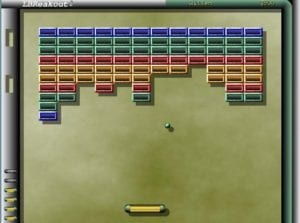 (A screenshot of the Breakout clone LBreakout2 )
(A screenshot of the Breakout clone LBreakout2 )
The Breakout, also known as the block-breaking game or the Brick Buster, is an Atari game published in 1976. It evolved from another Atari game called “Pong” (with a ping-pong-like rule), and according to the designer, it came from the idea of a single-player version of “Pong” . Due to its simple rule and gameplay, it is installed on many mobile devices and computers. To our project, it’s a very good example of maximizing the effect with limited resources. As the presentation of a project consists of two parts: the core and the manifestations, the key is to keep the core simple and interesting. The Breakout is doing that extraordinarily well, yet with more resources and time, they could have made a project with stronger expression. Afterall, the limitation brought by that condition is unavoidable.
C.Back to the Group Project
Going back to the group project, at the begining i defined the word “interactive” in a structuralism way: a process consist of three parts: “Input”, “Process” and “Output”, and in practice i started to use the deconstrcution view more that the interactivity of a certain project may consist dozens of interaction and therefore dozens of “Input”, “Process” and “Output”, so it may be really hard to find a clear line between these three parts sometimes. Sadly, what may be hard for us may also be hard for the test-users, which means the more complicated the rules are, the more obscure the project is to the audience and thus leads to worse interaction or interactivity. And the creator of mechanical mirror mentioned the simple and easy-to-understand output and the relationship between input and output is the main advantage of the project. The simplicity of communcation between the artwork and the audience leads to the efficiency of interaction and affects the user-experience greatly.So my strategy is to use a very interesting inner core with simple rules to support a understandable process, which may be better if it is repeatable.
Credit:
http://www.smoothware.com/danny/